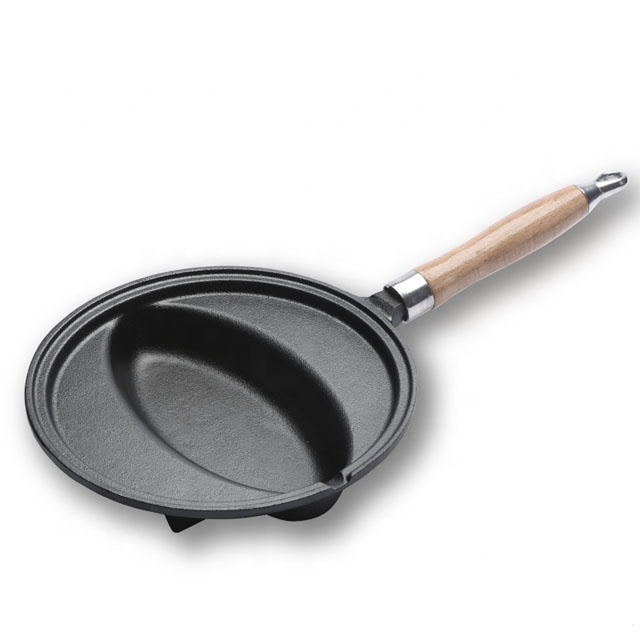
collectible cast iron skillets
The Allure of Collectible Cast Iron Skillets
Cast iron skillets have long been a staple in kitchens around the world, cherished for their heat retention, versatility, and ability to last for generations. However, in recent years, these timeless cooking tools have blossomed into a collector’s dream, with collectors seeking out vintage pieces that tell a story of their own.
A Rich History
The history of cast iron skillets dates back to the 1700s in Europe, but they became a prominent kitchen item in America during the 19th century. As pioneers settled in the vast landscapes, they relied on these durable cookware pieces for their ability to withstand high temperatures and their excellent cooking capabilities over open flames. Over time, notable manufacturers such as Griswold, Wagner, and Lodge emerged, producing skillets marked with distinct logos that have now become highly sought after by collectors.
These skillets not only embody functionality but also reflect a rich culinary heritage. Each piece carries the history of meals prepared, perhaps a family tradition passed down through generations. Collectors often feel a connection to their skillets, knowing they are inheriting not just a cooking tool but a slice of history.
The Thrill of the Hunt
One of the most exciting aspects of collecting cast iron skillets is the thrill of the hunt. Many collectors scour flea markets, estate sales, and online auction sites to find rare pieces. Some seek skillets from specific brands, while others focus on unique models with unusual designs or limited-edition releases. Cast iron skillets often come with unique serial numbers or markings, making each piece distinctive and collectible.
In particular, skillets made prior to World War II are highly coveted, as they often feature superior craftsmanship compared to many modern counterparts. The pre-war models are prized for their smooth cooking surfaces and vintage charm, often commanding high prices in the collector market.
collectible cast iron skillets

Care and Restoration
Collectors often emphasize the importance of proper care and restoration to maintain the quality and longevity of their cast iron skillets. Many enthusiasts believe in the philosophy that a well-cared-for skillet only improves with age, developing a naturally non-stick surface through seasoning—an essential process of applying oil and baking at high temperatures to build up layers of seasoning.
Restoring a skillet can involve careful cleaning, often using methods such as baking soda, vinegar, or even electrolysis to remove rust or old seasoning. Although some collectors prefer to leave their skillets in their found condition, others take pride in restoring them to their former glory, sometimes showcasing their beautifully restored skillets as a centerpiece in their kitchens.
A Passionate Community
The community of cast iron skillet collectors is vibrant and passionate. Online forums, social media groups, and local meet-ups allow enthusiasts to share their finds, tips, and recipes. Collectors often form friendships based on their shared interest, exchanging stories of their hunting adventures or favorite ways to prepare meals in their prized skillets.
Cookbooks and blogs dedicated to cast iron cooking have emerged, celebrating the versatility of these pieces. From cornbread to fried chicken, the possibilities are seemingly endless. Many collectors enjoy showcasing their unique skillet creations, further highlighting the fusion of utility and art.
Conclusion
Collectible cast iron skillets are more than mere cooking tools; they are cherished artifacts of history that connect us to our culinary past while offering endless opportunities for creativity in the kitchen. Whether you’re a novice cook or a seasoned chef, there’s a place in your kitchen for a cast iron skillet—likely one that could become a collector’s item in the future. Engaging with this hobby opens a world of history, community, and gastronomy that continues to inspire and delight fans worldwide.
-
Season Cast Iron Perfectly with GPT-4 Turbo TipsNewsAug.01,2025
-
High Quality Cast Iron Cookware - Baixiang County Zhongda MachineryNewsAug.01,2025
-
Premium Cast Iron Pan: Durable & Perfect HeatNewsAug.01,2025
-
High Quality Kitchen Durable Black Round Cast Iron Cookware Pancake Crepe Pan-Baixiang County Zhongda Machinery Manufacturing Co., Ltd.NewsAug.01,2025
-
Cast Iron Cookware - Baixiang County Zhongda Machinery | Nonstick, Heat ResistanceNewsAug.01,2025
-
High Quality Kitchen Durable Black Round Cast Iron Cookware - Baixiang County Zhongda Machinery | Non-Stick, Heat Retention, DurableNewsJul.31,2025


